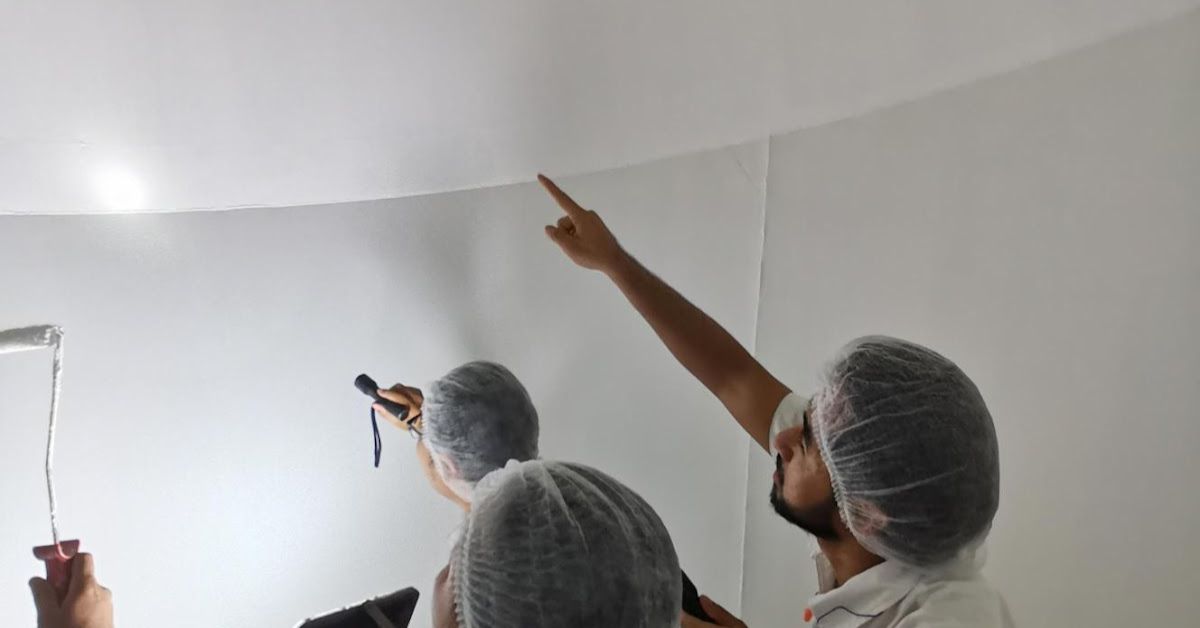Many industries rely on pneumatic systems to automate production processes and improve efficiency and productivity. However, like any machinery, they could wear and tear over time. To keep them operating at optimal performance, regular maintenance is crucial.
If you’re still familiarising yourself with pneumatic system upkeep, here’s some tips on how to maintain your pneumatic system:
1. Check for Leaks
Ignoring air leaks for too long can lead to pressure drops, increased system strain, and wasted air or product, ultimately reducing efficiency and driving up operational costs. Fortunately, leaks in a pneumatic system are often audible, making them relatively easy to detect.
Another way to determine whether any leaks are present is to check whether your blower or exhauster package have significant drops in pressure. To find where specific leaks are, apply a soapy water solution to suspected leak points—if bubbles form, a leak is present.
Since seals, gaskets, fittings, and joints are the most common areas for leaks, routine inspections are essential. If a leak is found, tighten any loose components and use an appropriate sealant for minor fixes.
2. Be Mindful of Air Compressor Placement
Whether it’s a Blower Package, Exhauster Package, or Vacuum Pump, your Air Compressor is critical to the operation of your pneumatic conveying system. It’s important to note that air compressors naturally draw in the surrounding air, which can contain dust, debris, pollen, lint, and even moisture. These particles get trapped in the filtration system, potentially clogging it and affecting the compressor’s performance.
To minimise frequent maintenance and ensure optimal functionality, it’s important to place the air compressor in a clean, well-ventilated area with minimal airborne contaminants.
3. Adhere to a Cleaning Schedule
Over time, dirt and other contaminants accumulate inside pneumatic components, leading to blockages, reduced airflow, and compromised system performance. As such, regular cleaning is essential to ensure efficiency and extend the lifespan of your equipment. Some key maintenance tasks to add to your checklist include:
- Wipe down actuators and cylinders to remove surface dust and debris before they accumulate.
- Regularly check and clean air filters to prevent clogging and maintain optimal airflow.
- Inspect hoses, fittings, and connectors for dust buildup, corrosion, or wear that could cause leaks or system inefficiencies.
- Flush out contaminants from air supply lines to prevent particles from entering critical components.
Food Manufacturing-Specific Cleaning Tips
For those in the food manufacturing sector using pneumatic systems, strict adherence to hygiene standards is essential to prevent contamination. To maintain compliance and ensure food safety, it’s important to keep the following in mind:
- Use food-grade lubricants to avoid introducing harmful substances into production.
- Implement sanitary cleaning methods, such as steam cleaning or chemical sanitisation, to remove residues without damaging components.
- Regularly inspect pneumatic conveying equipment for any food particles that could cause blockages or hygiene concerns.
As a member of the European Hygienic Engineering & Design Group (EHEDG), we have full access to resources such as guidelines, studies, and standard practices for specific components of your pneumatic conveying system.
4. Ensure Proper Control Valve Functionality
Control valves regulate airflow and pressure within a pneumatic system, and if they malfunction,
it can lead to inefficiencies, reduced machine performance, and even safety hazards. Therefore, ensuring that control valves operate correctly is essential for maintaining system stability and preventing costly downtimes.
Tips for Control Valve Maintenance
These are our recommendations to ensure the long-term efficiency of your control valve:
- Perform visual inspections regularly to detect early signs of wear or damage.
- Use leak detection methods like listening for air hissing sounds or applying a soapy water solution to fittings and seals to identify leaks.
- Replace worn-out seals and gaskets promptly to prevent further deterioration.
- Ensure proper lubrication where necessary to reduce friction and prolong the lifespan of valve components.
- Follow manufacturer recommendations for servicing intervals and part replacements.
5. Follow Manufacturer-Recommended Maintenance Schedules
Equipment manufacturers typically provide detailed maintenance schedules and instructions tailored to the pneumatic system’s operational demands, usage frequency, and environmental conditions. As such, it’s important to adhere to these guidelines as they help prolong the equipment’s lifespan and ensure optimal performance consistently. Furthermore, preventive maintenance by the equipment manufacturer reduces the likelihood of expensive emergency repairs or complete system failures that could disrupt operations.
6. Replace Worn or Failing Parts Proactively
Waiting for a part to completely fail before replacing it can lead to costly downtime, production stoppages, and even safety hazards. Instead, a proactive approach to component replacement ensures continuous operation and prevents minor issues from escalating into major failures.
Some of the signs that your pneumatic components need replacement include:
- If your system is struggling to maintain steady air pressure, a component may be failing.
- Hissing, clicking, or grinding sounds could indicate worn-out valves, seals, or actuators.
- If equipment is running slower or with reduced force, key components may need replacement.
- Cracks, corrosion, and loose fittings signal that a part needs to be changed.
7. Design or Redesign Systems for Easy Maintenance
In some cases, maintenance challenges arise from poor system design, where critical parts are difficult to reach, leading to longer servicing times and increased downtime. So if this is the case with your pneumatic system, consider getting professional help to modify existing systems for better accessibility. Professionals, like Pneu Powders Systems, could help with adjusting your pneumatic system design to not only enhance operational efficiency but also workplace safety and system maintenance.
Call a Professional for Maintenance and Repairs
While routine maintenance can often be managed in-house, more complex issues—such as persistent leaks, system inefficiencies, or the need for a redesign—require expert intervention. This is where Pneu Powders Systems comes in.
We specialise in pneumatic system maintenance and optimisation for a wide range of industries in Singapore, ensuring your equipment operates at peak efficiency. Our team of experts helps minimise downtime, enhance system performance, and prevent costly disruptions. Whether you need food manufacturing solutions or pneumatic conveying equipment maintenance, we provide tailored services to keep your operations running smoothly and efficiently.





